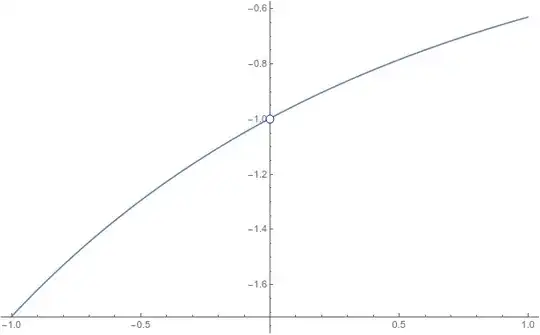The price of an action follow the function $f(t)=e^{-t}$. The question is, what is the rate of change of the price ? For me, the rate of change is the rate of change by unit of time $h$, i.e. $$\frac{f(t+h)-f(t)}{(t+h)-t}=\frac{e^{-t-h}-e^{-t}}{h}=e^{-t}\left(\frac{e^{-h}-1}{h}\right).$$
In other word, during an interval of time $[x,x+h]$, the price of the action increased by $\left(\frac{e^{-h}+1}{h}\right)he^{-t}$. I understand it as : the rate of change of the price is $\left(\frac{e^{-h}+1}{h}\right)$ multiplicate by a quantity that depend on the position only (here is $e^{-t}$). But the most important is $\frac{e^{-h}-1}{h}$ that really describe the rate of increasing independently on the position.
In my solution, they say that it's the derivative, i.e. $e^{-t}$. I really don't understand how to interpret this result. What does it mean exactly ? If the rate of change of the time is $h$, then the rate of change of the price is $e^{-t}$ ? It doesn't really make sense for me... Could someone explain ?
